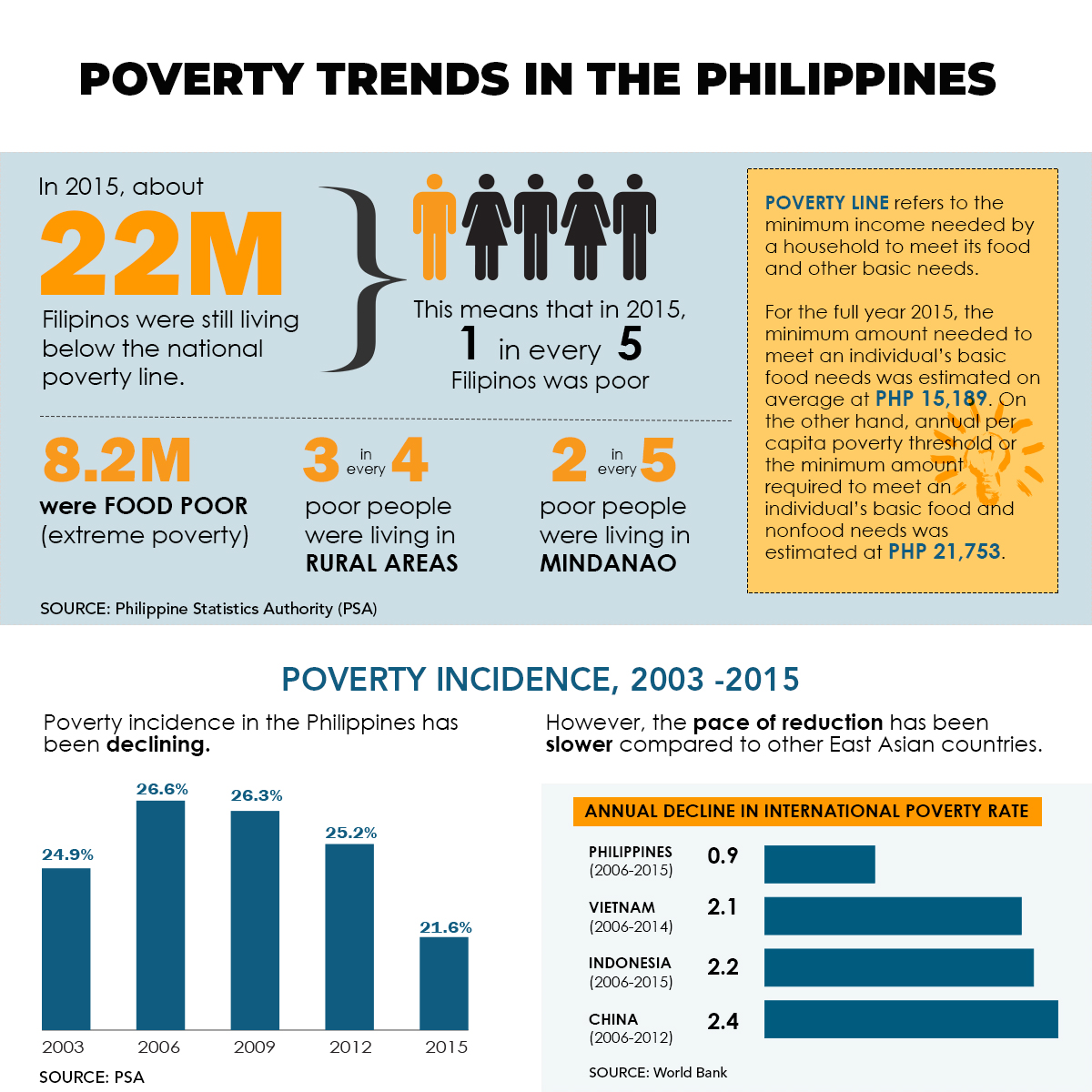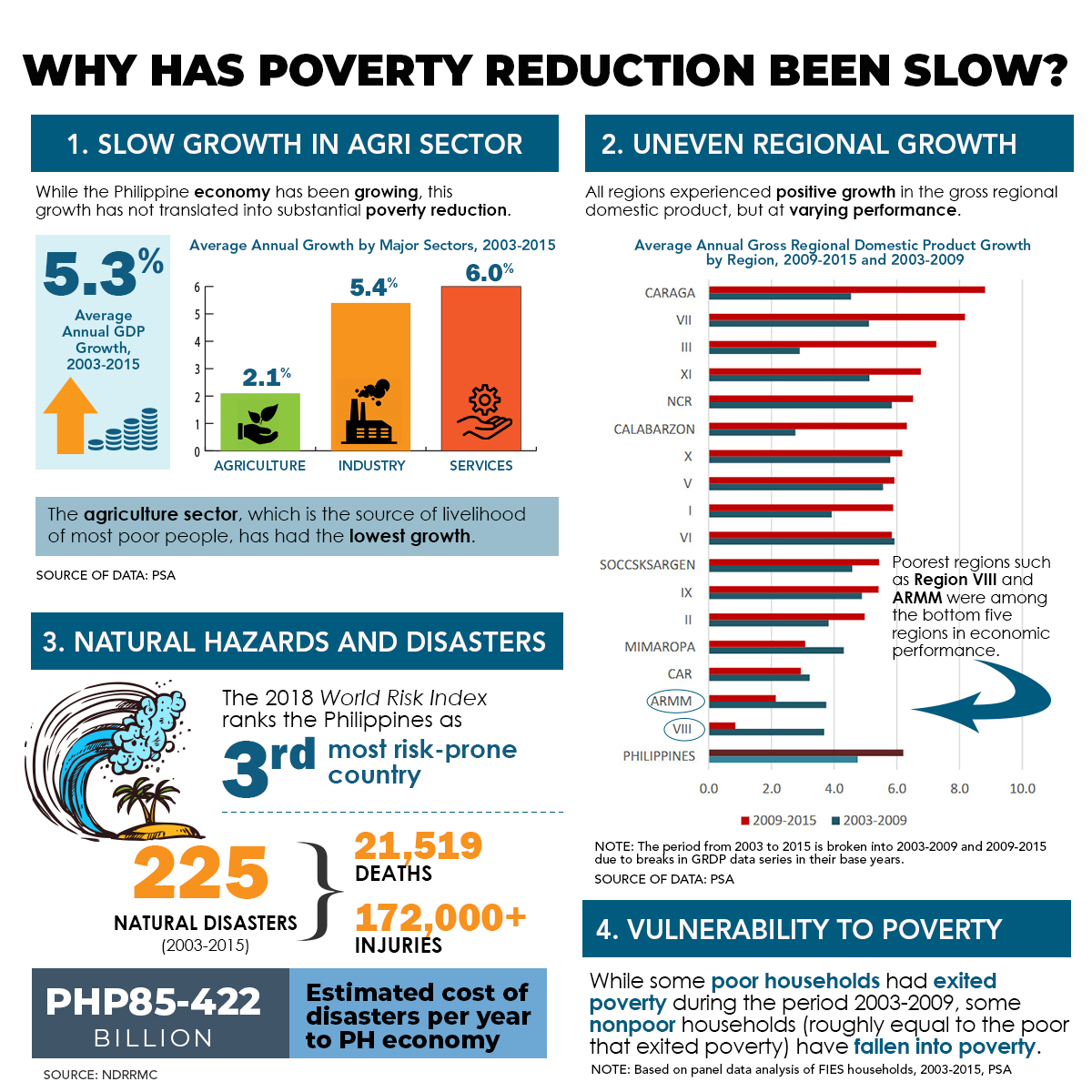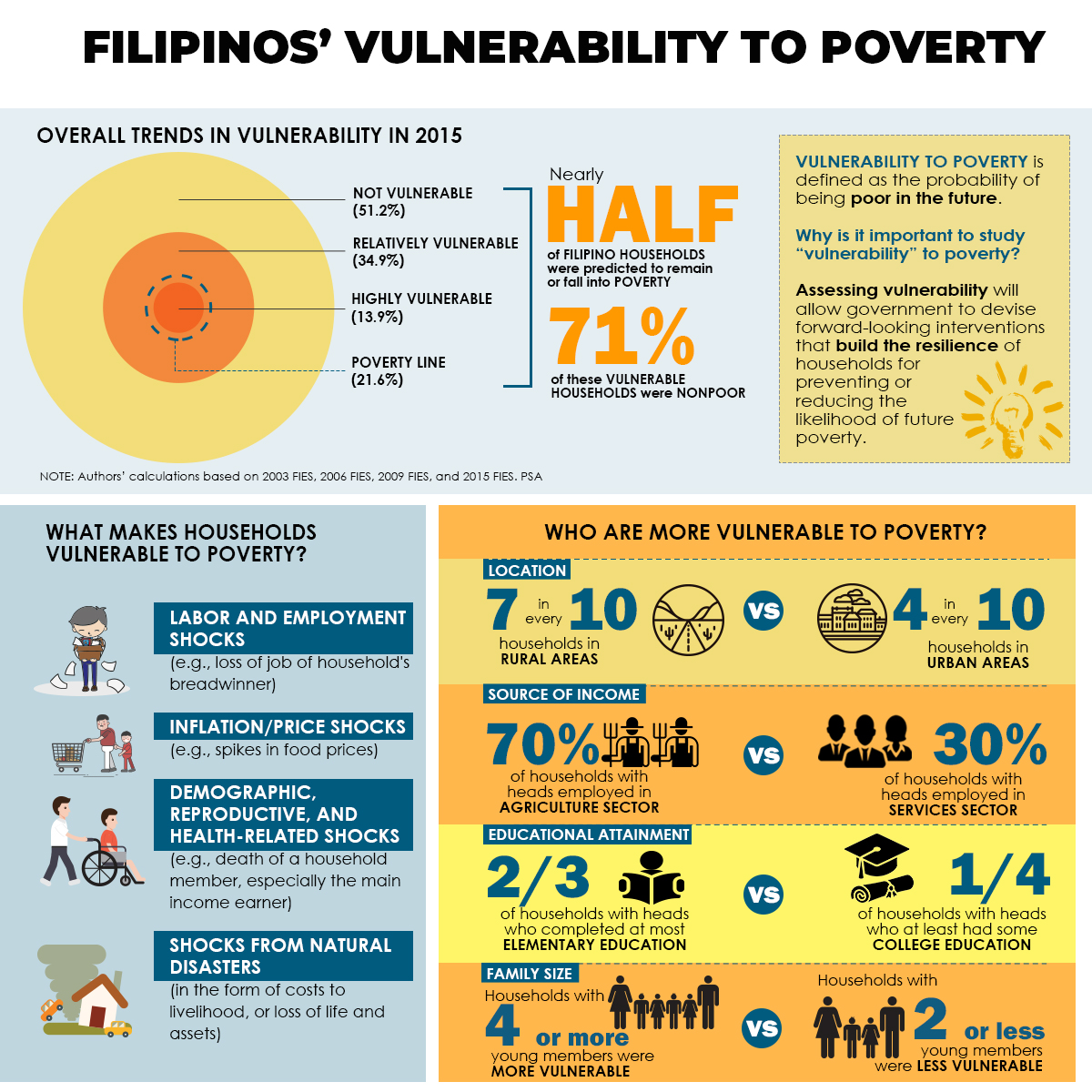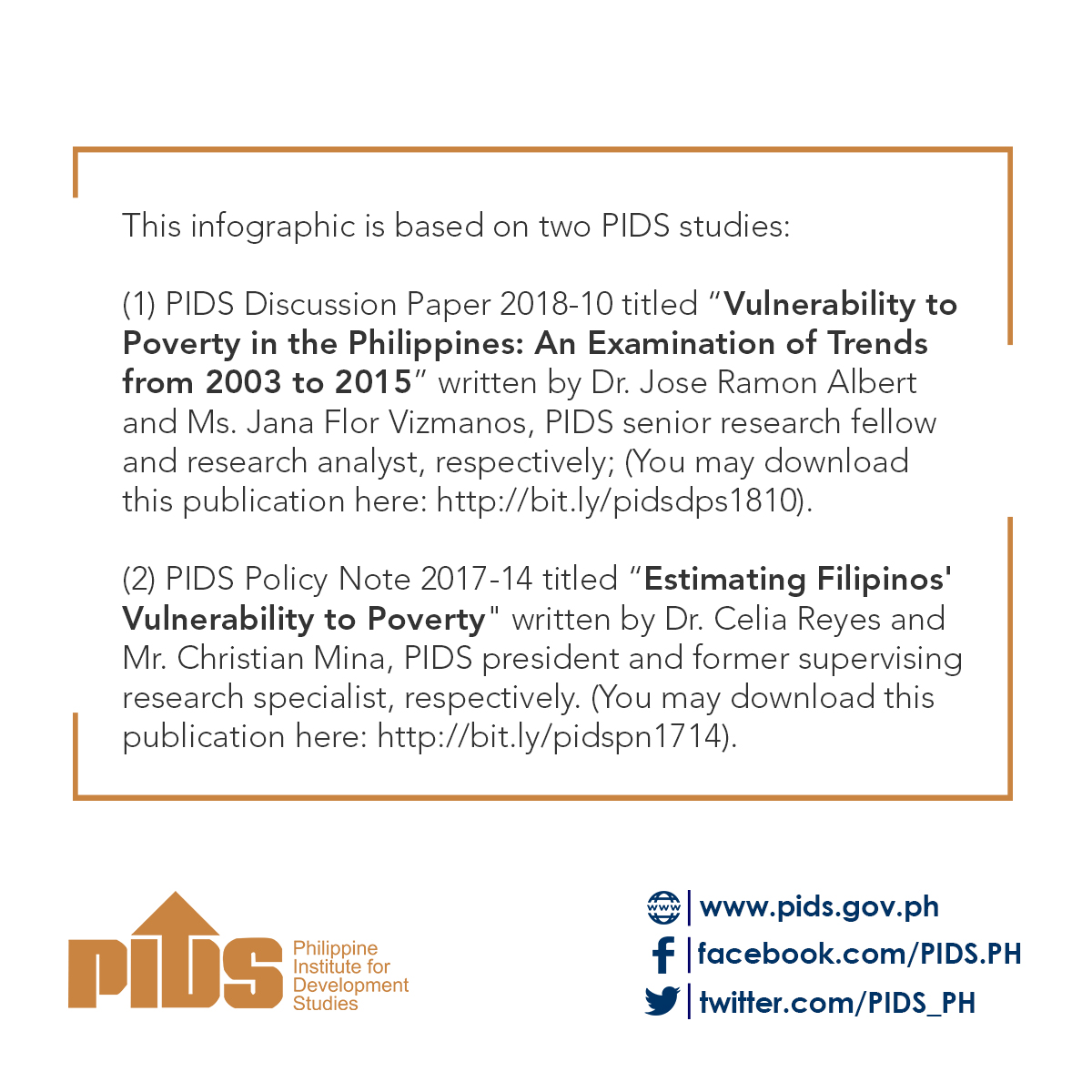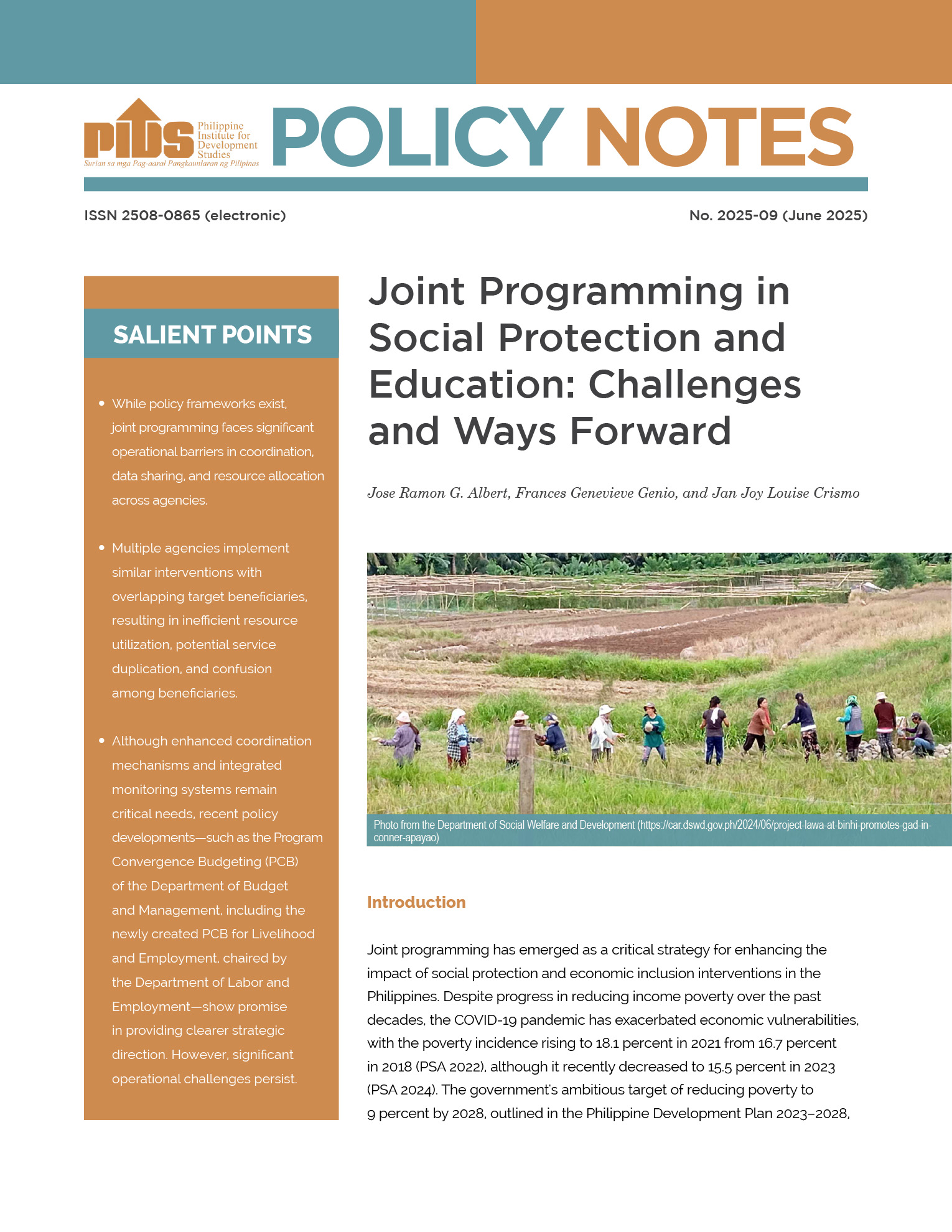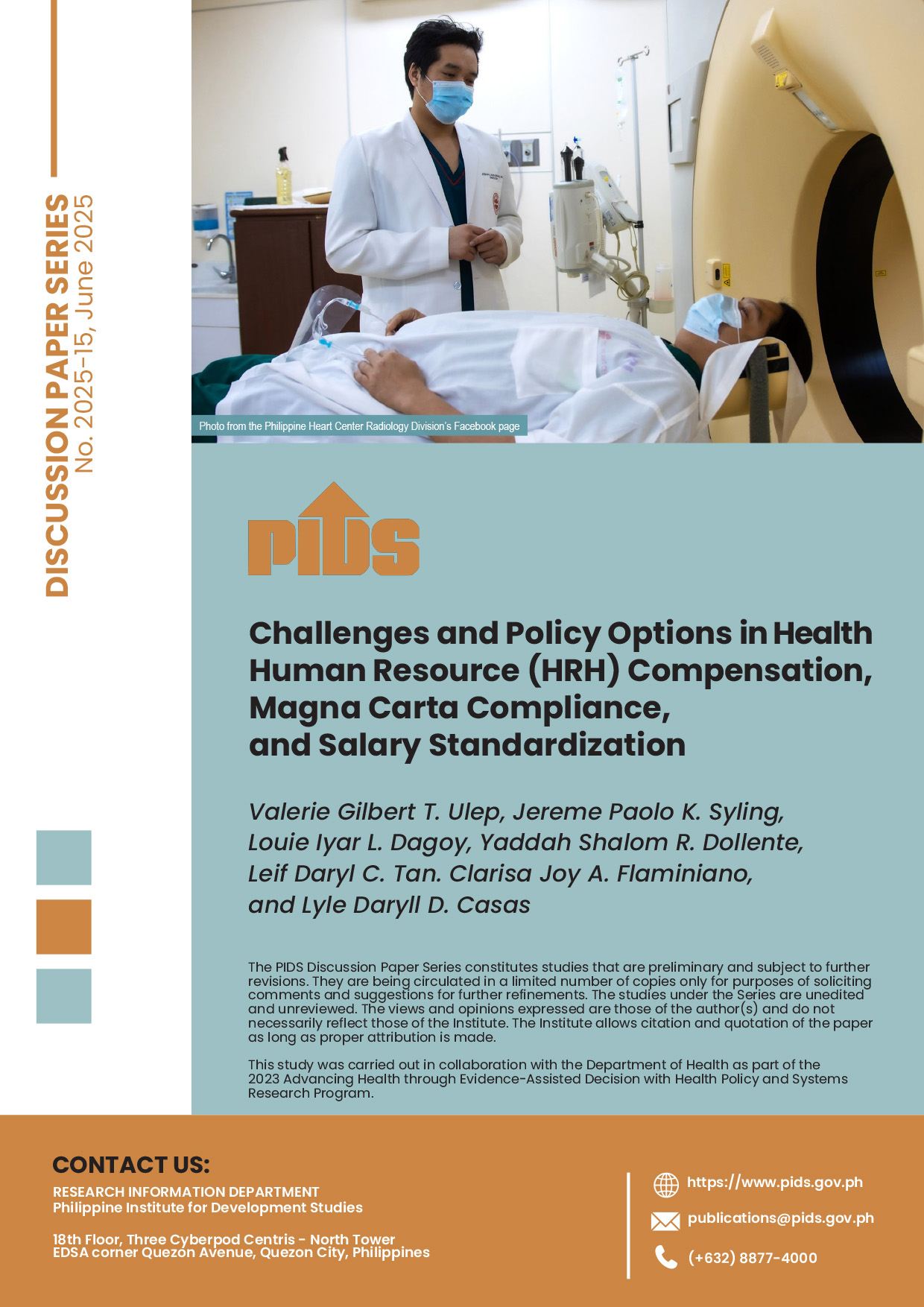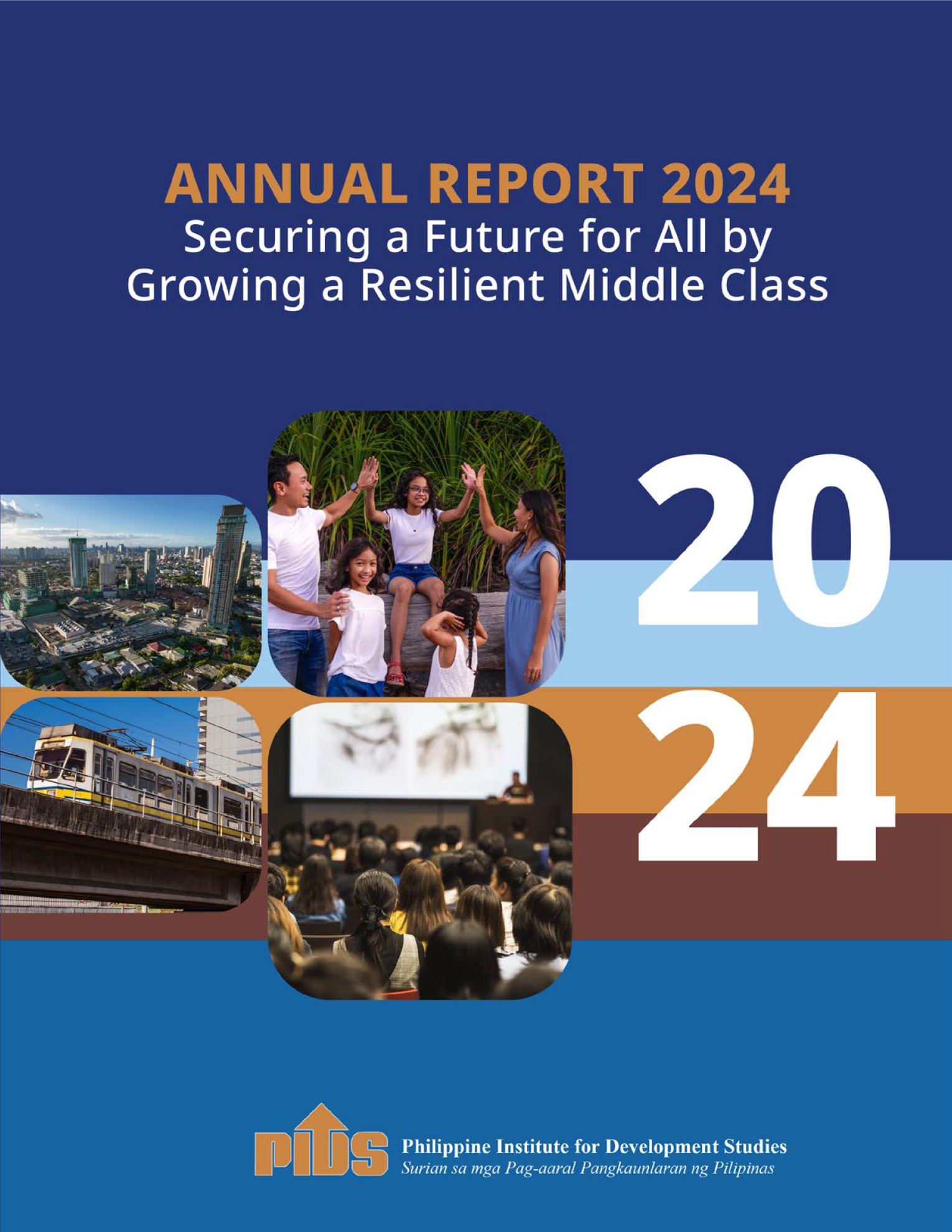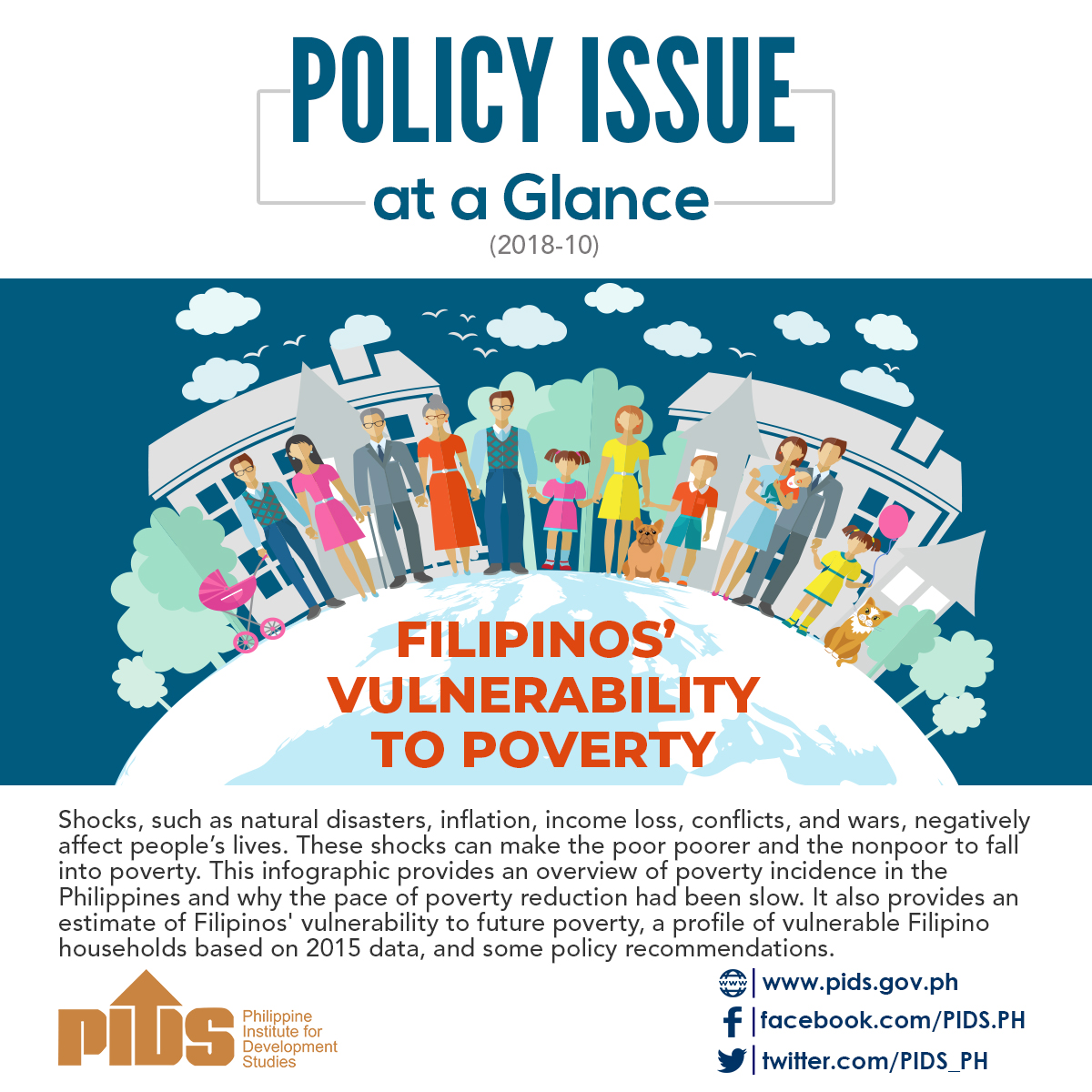
Shocks, such as natural disasters, inflation, income loss, conflicts, and wars, negatively affect people’s lives. These shocks can make the poor poorer and the nonpoor to fall into poverty. This infographic provides an overview of poverty incidence in the Philippines and why the pace of poverty reduction had been slow. It also provides an estimate of Filipinos' vulnerability to future poverty, a profile of vulnerable Filipino households based on 2015 data, and some policy recommendations.
This infographic is based on two PIDS studies:
1) PIDS Discussion Paper 2018-10 titled “Vulnerability to Poverty in the Philippines: An Examination of Trends from 2003 to 2015” written by Dr. Jose Ramon Albert and Ms. Jana Flor Vizmanos, PIDS senior research fellow and research analyst, respectively; (You may download this publication here: http://bit.ly/pidsdps1810)
2) PIDS Policy Note 2017-14 titled “Estimating Filipinos' Vulnerability to Poverty" written by Dr. Celia Reyes and Mr. Christian Mina, PIDS president and former supervising research specialist, respectively. (You may download this publication here: http://bit.ly/pidspn1714)
This infographic is based on two PIDS studies:
1) PIDS Discussion Paper 2018-10 titled “Vulnerability to Poverty in the Philippines: An Examination of Trends from 2003 to 2015” written by Dr. Jose Ramon Albert and Ms. Jana Flor Vizmanos, PIDS senior research fellow and research analyst, respectively; (You may download this publication here: http://bit.ly/pidsdps1810)
2) PIDS Policy Note 2017-14 titled “Estimating Filipinos' Vulnerability to Poverty" written by Dr. Celia Reyes and Mr. Christian Mina, PIDS president and former supervising research specialist, respectively. (You may download this publication here: http://bit.ly/pidspn1714)
Gallery Images:

